The Glory of Africa Part 11
I always love Africa a great deal as a black American. After almost 40 years of me living on this Earth, my core convictions have remained. I always believe in the truth. In 2021, it is the perfect time to describe the Glory of Africa again. In this new decade of the 2020's, more movements are in abundance. Technology has evolved in a great measure from Zoom to new versions of the iPhone. There are new statistics coming out. Yet, we have the same goal of black liberation in our minds and souls. After all of these years, I certainly have a great appreciation of the global black African Diaspora. Long ago, the Afro-Argentine leader Maria Remedio Del Valle fought for the independence of Argentina from Spanish rule. She helped soldiers on the field. She was brave, and by 2013, Argentina declared November 8 as the nationally recognized day to honor Afro-Argentines (and Black Culture). She (who is a black woman) is the mother of modern day Argentina. Black women are the mothers of the human family period.
Portia White was an Afro-Canadian operatic contralto who was an international singing super star. Her mother were descendants of the Black Loyalists, and her paternal grandparents were slaves in Virginia before moving into Canada. She sang at the church at an early age. The black man Jaime Hurtado Gnzalez was an Afro-Ecuadorian social activist and politician. He promoted social justice. Victoria Santa Cruz was an Afro-Peruvian activist and artist who championed Black Peruvian identity and visibility globally. She promoted dance. Her poem of Me Gritaron Negra was a Black pride anthem across Latin America. Patrice Lumumba fought imperialism in the Congo and fought for liberation in Africa. Patrice Lumumba stood up courageously for freedom for African people in opposition to injustice. In America, the hero Malcolm X spoke out against racism and advanced Pan-African unity without apology. So, Africa and the African Diaspora have a long legacy of advancing creativity, resiliency, activism, love, and justice. During this era of our time, we will continue to stand for environmental justice, black liberation, Black Love, economic justice, social justice, human rights, environmental justice, truth, and integrity. Africa is our Homeland as part of Humanity. From Africa, humanity traveled all over the world. The Glory of Africa is always in our DNA, in our thinking, and in our spirits. That is why I have an eternal love of Africa, Blackness, and freedom.
Diverse African Cultures
There are tons of African cultures in Africa. The Yoruba people have a large amount of culture in Africa. They live in Nigeria, Benin, Togo, and other parts of Western Africa. 35 million of the Yoruba people live in Africa. Most Yoruba people spoke with a Niger-Congo language. They are known to be involved in the Empire of Oyo. They are known to create terracotta, stone, and copper alloy structures (for purposes of art, architecture, music, and for other methods). Oral tradition is a big part of their way of life. Today, most of the Yoruba are Christians or Muslims. They have a traditional religion that have songs, histories, and belief in Orisa. Orisa or Orisha to the traditional religion are about manifestations of God. Some are known as Ogun (a god of metal, war, and victory), Shango (a god of thunder), Esu Elegbara, etc. To the traditional religion, the supreme God's principal manifestation if Olorun. The two other principal forms of the supreme God are Olodumare—the supreme creator—and Olofin, who is the conduit between Òrunn (Heaven) and Ayé (Earth). Oshumare is a god that manifests in the form of a rainbow, also known as Òsùmàrè in Yoruba, while Obatala is the god of clarity and creativity. Christianity and Islam have a huge influence in the Yoruba people too. Involving festivals, the Yoruba use percussion and other celebrations (they have ofada rice, amala, akara, and other foods eaten in their culture). The bata drum is found in the Yoruba people.
The Xhosa people are found in southern Africa. They live in South Africa, Zimbabwe, etc. They number in over 8 million people. Xhosa-speaking peoples (the amaXhosa, amaMpondo, abaThembu and amaMpondomise) inhabited South Africa and were well-established in the region prior to Dutch colonization. Their traditional homelands included large portions of eastern South Africa from the Gamtoos River to the region south of the modern-day city of Durban. Xhosa is an agglutinative tonal language of the Bantu family. While the Xhosas call their language "isiXhosa", it is usually referred to as "Xhosa" in English. Historically, the Xhosa follow oral traditions, follow the praise of ancestral heroes, and advances the use of herbalists. Rites of passage are always found in Xhosa culture. For example, the Xhosa community allows boys and girls to go through stages in figuring his or her role in society. Boys do rituals to transition from a boy to a man. The Xhosa settled on mountain slopes of the Amatola and the Winterberg Mountains. Many streams drain into great rivers of this Xhosa territory, including the Kei and Fish Rivers. Rich soils and plentiful rainfall make the river basins good for farming and grazing making cattle important and the basis of wealth. Traditional foods include beef (Inyama yenkomo), mutton (Inyama yegusha), and goat meat (Inyama yebhokwe), sorghum, milk (often fermented, called "amasi"), pumpkins (amathanga), Mielie-meal (maize meal), samp (umngqusho), beans (iimbotyi), vegetables, like "rhabe", wild spinach reminiscent of sorrel, "imvomvo", the sweet sap of an aloe, or "ikhowa", a mushroom that grows after summer rains. Today, we know of famous Xhosa people like John Knox Bokwe, Desmond Tutu, Phyllis Ntantala-Jordan, Nelson Mandela, Zenani Mandela, Ndaba Mandela, and other people.
The Luo people are found in East Africa. They are related to Nilotic ethnic groups. They live in Kenya, Sudan, southern Sudan, and other locations as far as Tanzania. The Luo are part of the Nilotic group of people. The Nilotes had separated from the other members of the East Sudanic family by about the 3rd millennium BC. Within Nilotic, Luo forms part of the Western group. Some live in Ethiopia too. The Luo in Kenya, who call themselves Joluo (aka Jaluo, "people of Luo"), are the fourth largest community in Kenya after the Kikuyu, Luhya and Kalenjin. In 2017 their population was estimated to be 6.1 million. In Tanzania they numbered (in 2010) an estimated 1,980,000. Famous Luo people today are Professor Henry Odera Oruka, Lupita Nyong'o, John Akii-Bua, Grace Ogot, James Orengo, and other human beings. It is important to praise Lupita Nyong'o for her acting work, for her social activism, and her words to refute colorism. She is a great human being.
The San people live in Southern Africa. They are among the most ancient people of human history. They live in Namibia, South Africa, Zimbabwe, and other nations. The San people number in about 105,000 people. They created some of the oldest cultures on Earth whose ancestors were hunter gatherers. Today, many of them are farming. Scholars involved in genetics and anthropology found out many facts about them. One broad study of African genetic diversity completed in 2009 found that San people were among the five populations with the highest measured levels of genetic diversity among the 121 distinct African populations sampled. Certain San groups are one of 14 known extant "ancestral population clusters"; that is, "groups of populations with common genetic ancestry, who share ethnicity and similarities in both their culture and the properties of their languages." Culturally, the San people act as a community. Children play and have leisure. The San people have music, dances, and women are given a high status in San society. Their society is egalitarian. Various Y chromosome studies show that the San carry some of the most divergent (oldest) human Y-chromosome haplogroups. These haplogroups are specific sub-groups of haplogroups A and B, the two earliest branches on the human Y-chromosome tree. Mitochondrial DNA studies also provide evidence that the San carry high frequencies of the earliest haplogroup branches in the human mitochondrial DNA tree. This DNA is inherited only from one's mother. The most divergent (oldest) mitochondrial haplogroup, L0d, has been identified at its highest frequencies in the southern African San groups. Rock paintings are done by the San people too.
The Malagsy ethnic group of Madagascar in Africa is made up of a combination of continental African Bantu-speaking peoples who migrated from the Eastern coast of mainland Africa, and the Southeast Asian migrants of Austronesian heritage, who migrated from Borneo and other islands of Indonesia of Maritime Southeast Asia. So, the Malagsy people have a mixture of African and Asian ancestry. But the proportion of ancestral genes differs. Coastal Malagasy populations, including the Temoro, Vezo, and Mikea, etc. have approx. 70% African ancestry and 30% Asian ancestry, while highlander tribes tend to have lower African ancestry at around 45%.In a recent island-wide survey the male-only Y chromosomes of African origin are more common than those of East Asian origin but it varies depending on the study (70.7 vs. 20.7 or 51% vs 34%). However the mtDNA lineages, passed down from mother to child, are the opposite (42.4% African origin vs. 50.1% East Asian origin). The Malagasy diaspora in the United States includes those descended from people who, slave or free, came during the 18th and 19th centuries. Other Americans of Malagasy descent are recent immigrants from Madagascar. Some notable Americans of Malagasy descent include Andy Razaf, Katherine Dunham, Regina M. Anderson, William H. Hastie, George Schuyler, Philippa Schuyler, Robert Reed Church and Mary Church Terrell. Other human beings with that descent also include: Frederick D. Gregory, Thomas P. Mahammitt, Paschal Beverly Randolph, Maya Rudolph, Claude McKay, Jess Tom, Ben Jealous, and Keenan Ivory Wayans. Yes, there were black slaves in America from Madagascar. The first recorded African slave in Canada, Olivier Le Jeune, was taken from Madagascar to New France in 1628.
Ancient Nubia
To understand about ancient African civilizations fully, you have to study the civilization of Nubia. It is found in a region between the first cataract of the Nile (south of Aswan in southern Egypt), and the confluence of Blue and White Niles (in Khartoum at Central Sudan or Al Dabbah). It was one of the first civilizations of ancient Africa. The name of Nubia came from the name of the Noba people, who lived in the area during the 300's A.D. The Noba spoke a Nilo-Saharan languages related to Old Nubian. Nubia is known as Kush and Aethiopia (or Ethiopia to the ancient Greek people). The people of Nubia spoke at least 2 varieties of the Nubian language including Nobiin, Kenuzi-Dongola, and Midob. Nomadic cattle herders lived in the prehistoric times in Nubia. They made sophisticated pottery. By 5000, B.C., Nubia was in the Neolithic revolution. The Sahara became drier and people domesticated sheep, goats, and cattle. Nubian rock art depicts hunters using bows and arrows in the Neolithic period, which is a precursor to Nubian archer culture in later times.
Megaliths discovered at Nabta Playa are early examples of what seems to be one of the world's first astronomical devices, predating Stonehenge by almost 2,000 years. This complexity as expressed by different levels of authority within the society there likely formed the basis for the structure of both the Neolithic society at Nabta and the Old Kingdom of Egypt. In Upper Nubia, there was the A Group culture from 3500 to 3000 B.C. Nubia is one of the oldest civilizations on Earth. A Group Culture was in Lower (Northern Nubia) too. They traded with the Egyptians and exported gold. The city of Qustul had done of social developments like pottery, incense burners, and other parts of living. Writing developed in Egypt around 3300 BC. In their writings, Egyptians referred to Nubia as "Ta-Seti", or "The Land of the Bow," as the Nubians were known to be expert archers. Early Kerma culture was from 3000 to 2400 B.C.
We know of ancient Nubia from the Kerma culture which lasted from ca. 2500 B.C. to its conquest by the New Kingdom of Egypt under Pharaoh Thutmose I in ca. 1500 B.C. The C-Group civilization was found in Upper and Lower Nubia. By 1650 B.C., Egyptian texts started to refer to only two kingdoms in Nubia: Kush and Shaat. Relations between the Egyptians and Nubians showed peaceful cultural interchange, cooperation, and mixed marriages. Nubian bowmen that settled at Gebelein during the First Intermediate Period married Egyptian women, buried Egyptian style, and eventually could not be distinguished from Egyptians. Some Egyptian pharaohs may have had Nubian ancestry: Mentuhotep II of the 11th Dynasty "was quite possibly of Nubian origin" and Amenemhet I, founder of the 12th Dynasty, "may have had a Nubian mother." However, according to F. J. Yurco, "Egyptian rulers of Nubian ancestry had become Egyptians culturally; as pharaohs, they exhibited typical Egyptian attitudes and adopted typical Egyptian policies." Also, the Nubians and Egyptians had conflicts too. Sesotris III relentlessly expanded his kingdom into Nubia (from 1866 to 1863 BC) and erected massive river forts including Buhen, Semna, Shalfak and Toshka at Uronarti to gain more control over the trade routes in Lower Nubia. They also provided direct access to trade with Upper Nubia, which was independent and increasingly powerful during this time. These Egyptian garrisons seemed to peacefully coexist with the local Nubian people, though they did not interact much with them. The Kerma kingdom of Nubia developed its military. Napata was the location of a major Nubian city.
After Upper Nubia annexed Lower Nubia around 1700 BC, the Kingdom of Kush began to control the area. At this point, C-group Nubians and Egyptians began to proclaim their allegiance to the Kushite King in their inscriptions. Egypt conquered Lower and Upper Nubia from 1500 to 1070 BC. However, the Kingdom of Kush survived longer than Egypt. The ancient Egyptians conquered Lower and Upper Nubia during the days of the Thutmose I. They controlled both areas until 1070 B.C. Nubian Prince Heqanefer bringing tribute for King Tutankhamun, 18th dynasty, Tomb of Huy. Circa 1342 – c. 1325 BC. The Napatan Empire lasted from 750-542 B.C. This was during the 25th Dynasty.
The Napatan Empire ushered in the age of Egyptian archaism, or a return to a historical past, which was embodied by a concentrated effort at religious renewal and restoration of Egypt's holy places. The Nubian leader Piye expanded the Temple of Amun at Jebel Barkal by adding "an immense colonnaded forecourt." Shabaka restored the great Egyptian monuments and temples, "unlike his Libyan predecessors." Taharqa enriched Thebes on a monumental scale." At Karnak, the Sacred Lake structures, the kiosk in the first court, and the colonnades at the temple entrance are all built by Taharqa and Mentuemhet. In addition to architecture, the Kingdom of Kush was deeply influenced by Egyptian culture. By 780 BC, Amun was the main god of Kush and "intense contacts with Thebes" were maintained. Kush used the methods of Egyptian art and writing. The Nubian elite adopted many Egyptian customs and gave their children Egyptian names. Although some Nubian customs and beliefs (e.g. burial practices) continued to be practiced, Egyptianization dominated in ideas, practices, and iconography. The cultural Egyptianization of Nubia was at its highest levels at the times of both Kashta and Piye. The Nubian Kingdom conquered ancient Egypt during the 25th Dynasty.
Nubia was home to several empires, most prominently the Kingdom of Kush, which conquered Egypt in eighth-century BC during the reign of Piye and ruled the country as its 25th Dynasty (to be replaced a century later by the native Egyptian 26th Dynasty). Kashta peacefully became King of Upper and Lower Egypt with his daughter Amendiris as Divine Adoratrice of Amun in Thebes. The city state of Napata was the capital of Kush. Nubian King Taharqa, was crowned in Memphis in 690 BC. Taharqa conquered many lands, and worked with his army to aid Judah and King Hezekiah in fighting the Assyrians ran by King Sennacherib. The Assyrians later defeated Taharqa. Taharqa's successor, Tantamani, sailed north from Napata with a large army to Thebes, where he was "ritually installed as the king of Egypt." From Thebes, Tantamani began his reconquest and regained control of Egypt as far north as Memphis. The Assyrians ruled Egyptians forcing the Nubians outof Egypt. The heirs of the Kushite empire established their new capital at Napata, which was also sacked by the Egyptians in 592 BC. The Kushite kingdom survived for another 900 years after being pushed south to Meroë. The Egyptianized culture of Nubia grew increasingly Africanized after the fall of the 25th Dynasty until Queen Amanishakhete acceded in 45 BC. She temporarily arrested the loss of Egyptian culture, but then it continued unchecked.
The Meroitic era lasted from 542 B.C. to 400 A.D. Meroe was the southern capital of the Kingdom of Kush. Merotic language had written scripts too. Meroë is mentioned in first-century AD Periplus of the Erythraean Sea: "farther inland, in the country towards the west, there lies a city called Meroe." In fifth-century BC, Greek historian Herodotus described it as "a great city...said to be the mother city of the other Ethiopians." Together, Musawwarat es-Sufra, Naqa, and Meroë formed the Island of Meroe. The town's importance gradually increased from the beginning of the Meroitic Period, especially from the reign of Arakamani (c. 280 BC) when the royal burial ground was transferred to Meroë from Napata (Jebel Barkal). Excavations revealed evidence of important, high ranking Kushite burials, from the Napatan Period (c. 800 – c. 280 BC) in the vicinity of the settlement called the Western cemetery. They buried their kings in small pyramids with steeply sloped sides that were based on New Kingdom Viceroy designs. Meroe traded with India and China. The Lion Temple was constructed by Arnekhamani and bears inscriptions in Egyptian hieroglyphs, representations of elephants and lions on the rear inside wall, and reliefs of Apedemak depicted as a three-headed god on the outside walls. The Great Reservoir is a hafir to retain as much as possible of the rainfall of the short, wet season. It is 250 m in diameter and 6.3 m deep. Sisters of the King and Queens in Nubia were called Kandace.
According to scholar Basil Davidson, at least four Kushite queens — Amanirenas, Amanishakheto, Nawidemak and Amanitore — probably spent part of their lives in Musawwarat es-Sufra. Pliny writes that the "Queen of the Ethiopians" bore the title Candace, and indicates that the Ethiopians had conquered ancient Syria and the Mediterranean. In 25 BC the Kush Kandake Amanirenas, as reported by Strabo, attacked the city of Syene (known as Aswan today) within the territory of the Roman Empire; Emperor Augustus destroyed the city of Napata in retaliation. In the New Testament biblical account, a treasury official of "Candace, queen of the Ethiopians", returning from a trip to Jerusalem, met with Philip the Evangelist and was baptized. Darius I invaded Kush before. The ancient Romans invaded Nubians, but both sides signed a peace treaty promoting trade. The Nubian Queen Amanirenas lived during that time period. Meroe would be defeated by the rising Kingdom of Aksum.
Around 350 AD, the area was invaded by the Kingdom of Aksum and the Meroitic kingdom collapsed. Three smaller Christian kingdoms replaced it: the northernmost was Nobatia (capital Pachoras; now modern-day Faras, Egypt) between the first and second cataract of the Nile River; in the middle was Makuria (capital Old Dongola), and southernmost was Alodia (capital Soba). King Silky of Nobatia defeated the Blemmyes and recorded his victory in a Greek language inscription carved in the wall of the temple of Talmis (modern Kalabsha) around 500 AD. Christianity was powerful in the Nubian region by the 300's A.D. Nubia was conquered by the Mamluk rulers in 1272. Today, Nubians speak mostly the Arabic language with the retention of their own cultures. Now, the region of Sudan is divided into Sudan and Southern Sudan.
From the 3rd century BC to 3rd century AD, northern Nubia would be invaded and annexed to Egypt, ruled by the Greeks and Romans. This territory would be known in the Greco-Roman world as Dodekaschoinos. Kush's collapse in the fourth century AD was preceded by an invasion from Ethiopia's Kingdom of Aksum and the rise of three Christian kingdoms: Nobatia, Makuria and Alodia. Makuria and Alodia lasted for roughly a millennium. Their eventual decline started not only the partition of Nubia, which was split into the northern half conquered by the Ottomans and the southern half by the Sennar sultanate, in the sixteenth century, but also a rapid Islamization and partial Arabization of the Nubian people. Nubia was reunited with the Khedivate of Egypt in the nineteenth century. Today, the region of Nubia is split between Egypt and Sudan.
The Demographics of Africa
The demographics of Africa is very diverse. Africa's population has increased rapidly in the past 40 years. Its population is very young in many African nations. Some African nations have more than half of the population being under 25 years of age. Africa has a population of 1.3 billion people in 2018. Back in 1950, it was 229 million and 630 million in 1990. Africa's population is larger than Europe. The babies being born in Africa may reach 37% by 2050 The Bantu language speakers are found mostly in southern, central, and southeast Africa. There are many Swahili speakers in East Africa. There are Bantu, Capoid, Berber, the Copts, and other groups of African people. Arabic people came into North Africa heavily by the 7th century. During ancient times, North Africa was populated by the Phoenicians (who founded Carthage), the Hyksos, the Indo-Iranian Alans, the Greeks, the Romans, and the Vandals. Africans profess many religious views. About 45% of Africans are Christians, and 40% of Africans are Muslims. There are 10 percent who follow traditional African religions. The rest are Hindu, Buddhist, Confucianist, Bahai, followers of Judaism, and irreligious. Over one thousand languages are spoken in Africa. The major languages spoken in Africa are Afroasiatic, Nilo-Saharan, Niger-Congo (including Bantu languages), Khoisan, Indo-European, and Austronesian. To this day, many Africans have dealt with health issues, and many activists are using public policies around the clock in helping African lives to reach their highest potentials as human beings.
Updates on the African Diaspora
I always love to research and write about this issue of the black African Diaspora for years. For over 10 years, I have learned about the African Diaspora in a higher level. Scholars like Runoko Rashidi from Los Angeles certainly have motivated me in this journey. Like always, forever, I will be pro-black. As Africans, people of black African descent do live in the four corners of the Earth. I have mentioned the following for years. You can't love black people without loving black Africans and the black African Diaspora. If someone claims to believe in black liberation, but he or she has xenophobic views about the African Diaspora, he or she is a liar (and anti-black). So, I reject so-called social movements who seek division in the Diaspora instead of black liberation. You know which social movements that I writing about (i.e. FBA and ADOS xenophobic movements). Black people live globally, and all black people are entitled to freedom and justice by birthright without exception. 2 DNA Tests prove that my ancestors came mostly from Nigeria and Congo. I am obviously an African American. During this generation, we understand so many diverse black people making a difference in the lives of humanity. The African Diaspora is global being found in America, Brazil, Haiti, Saudi Arabia, Peru, Turkey, and other nations of the world. We speak many languages. Many of us are Christians, Muslims, follow traditional African religions, etc. We exist in different ages. We live in urban, rural, and suburban locations. We are still part of one black African family regardless of our diverse cultures and nationalities. That truth ought to be wholeheartedly cherished.
Afro-Europeans
Afro-Europeans are found all over Europe and other places in the world. There are almost 10 million of them in the world today. The Afro-British people are about 2 million in the United Kingdom. They have a long, rich history. Many of them have Afro-Caribbean heritage. New research have shown that black people lived in the UK spanning thousands of years. Many Berber North African people came into the UK along with the Phoenicians who traded with British people. We know of DNA evidence of both North African and Sub-Saharan black African peoples in the UK long before the Middle Ages. In 2013, a skeleton was discovered in Fairford, Gloucestershire, which forensic anthropology revealed to be that of a sub-Saharan African woman. Her remains have been dated between the years 896 and 1025. By the 1500's, there were black musicians like John Blanke. Many Africans like Ellen More (who was a black woman) was in the court of James IV of Scotland. Some black people back then were business owners. Afro-British people fought the slave trade and helped to end slavery in the UK. These human beings are people like Ignatius Sancho and Olaudah Equiano. Afro-British people fought in wars, was part of the British Civil Rights Movement, and made many contributions in society.
Afro-French people are heavily found in Paris, Lyon, Marseilles, Martinique, Guadeloupe, French Guiana, Saint Martin, Reunion, Mayotte, New Caledonia, etc. They speak French and African languages including other language. Most worship God in Christianity, many of Muslims, some are irreligious, and others follow traditional African religions. Scholars believe that between 3 and 5 million Afro-French people are in France. Some organizations, such as the Representative Council of France's Black Associations (French: Conseil représentatif des associations noires de France, CRAN), have argued in favor of the introduction of data collection on minority groups but this has been resisted by other organizations and ruling politicians. There are many black French people in high levels of French government like Roger Bambuck, Laura Flessel-Colovic, Laetitia Avia, Maxette Grisoni-Pirbakas, Maurice Ponga, and other human beings. Frantz Fanon lived in France, but he renounced his French citizenship later on. Famous Afro-French athletes are Christine Arron, Yannick Noah, Francis Ngannou, and other people.
There are over 1 million Afro-Italian people. Thousands of years ago, black people were in the Roman Empire. They live today in Rome, Milan, Turin, Palermo, Bologna, Brescia, Bergamo, Florence, etc. Many Afro-Italians are emigrants, and they speak many languages. They worship in diverse creeds too. Some have left from Libya to go into the nation. Also, many come from Ghana, Senegal, Nigeria, Eritrea, and Syria. Famous Afro-Italians are Toni Iwobi, Zahra Bani, and other human beings.
Afro-Spanish people are found everywhere in the Iberian Peninsula. Juan Latino was a poet and Renaissance humanist. Juan De Pareja was a famous scholar. The singer Concha Buika is one of the greatest international singers of our generational. Historian and Pan-African activist Antumi Toasije has done tons of research on black people too. The Sister Elvira Dyangani Ose is a famous curator from Spain. Today, there are Afro-Spanish journalists like Francine Galvez, Lucia Mbomio, Desiree Ndjambo, and other people. Athletes of black African Spain in Span are Ismael Althuman, Maria Bernabeu, Vanessa Ble, etc.
The Afro-German human beings have a long history. They number in about 1 million people. They live in Berlin, Hamburg, Frankfurt, Darmstadt, Munich, Bremen, and Colonge. During the 1720s, Ghana-born Anton Wilhelm Amo was sponsored by a German duke to become the first African to attend a European university; after completing his studies, he taught and wrote in philosophy. Many Germans were involved in the slave trade too. Germany exterminated the Nama people in 1907. During ancient times, Afro-Germans existed like Ignatius Fortuna. During Nazi Germany, many Afro-German people were discriminated against, some were sterilized by force, and others were terrorized by the Nazis. For an autobiography of an Afro-German in Germany under Nazi rule see Hans Massaquoi's book Destined to Witness. Theodor Michael, main witness in the documentary Pages in the Factory of Dreams published 2013 his autobiography Deutsch Sein Und Schwarz Dazu. The end of World War II brought Allied occupation forces into Germany. American, British and French forces included numerous soldiers of African American, Afro-Caribbean or African descent, and some of them fathered children with ethnic German women. Today, Afro-Germans are here with Steffi Jones being the President of the Organizing Committee of the 2011 FIFA Women's World Cup (and head coach of the Germany women's national football team from 2016 to 2018). Audre Lorde lived in Germany for years to promote the Afro-German community. She encouraged Black German women such as May Ayim and Ika Hügel-Marshall to write and publish poems and autobiographies as a means of gaining visibility. Black people regularly immigrant into Germany from Nigeria, Ghana, etc. Ika Hügel-Marshall is one of the greatest activists of the Afro-German community. Alex King, Amewu Mensah, Linda Kisabaka, and others are famous athletes in Germany. Leila Negra is a famous actress along with Florence Kasumba. Boris Kodjoe, and others are people from Germany too.
Afro-Dutch black people are widespread in the world indeed. Many of them came from the Caribbean from the area of Suriname. There is also a sizable population of Cape Verdean, Ghanaian, Nigerian, Somali, Angolan and other African communities of more recent immigrants. The majority of Afro-Dutch people migrated to the Netherlands from the 1970s onward. Most of the recent migrants arriving either as political refugees seeking freedom or, more often, to escape regional conflicts, such as from Eritrea. Afro-Portuguese people are very common in Portugal. Black people in Portugal are still fighting for racial justice. Black people live in Belgium like Romelu Luaku, Elodie Ouedraogo, and other people. There are about 220,000 black people in Sweden too. African immigrants have been living in Sweden since the 17th century, but in very few numbers. In 1900, there were 79 Africans in Sweden, of which 5, all South Africans, were citizens. One of the early documented Africans in Sweden was Gustav Badin, (1747 or 1750 to 1822), a black court-servant and diarist, originally a slave, butler of Queen of Sweden, Louisa Ulrika and later Princess Sophia Albertine of Sweden. Badin was not the only African swede during the 18th century. There were black people in the royal regiments, one of them was the trumpeter Richard Abramsson who was born in the US. Most of the descendants to the African servants face poverty in Sweden.
In the 1880s, a circus performer named John Hood moved from the US to Sweden. It is unclear if John Hood was of complete African descent or if he was half-European. Hood was the great-great-grandfather of Frederik Reinfeldt, who was prime minister of Sweden from 2006-2014. With either 1/16 or 1/32 African blood, Reinfeldt was the first head of state in any European country to be known to have black ancestry. The 1970s, 1980s and 1990s saw increasing immigration from Africa, often as a consequence of civil wars. Swedish statistical data show that the African-born population has grown from 596 in 1960 to 4,149 in 1970, to 10,025 in 1980, 27,343 in 1990, 55,138 in 2000 and 103,077 in 2009. Many Africans in Sweden came form Ethiopia, Eritrea, Gambia, Morocco, Nigeria, Egypt, etc. Joe Frans, Ann-Sofie Galman, Seinabo Sey, Gladys del Pilar, and other famous Afro-Swedish people are in the modern era. There are black people in Austria too. Estimate making use of current Sub-Saharan born population (68,843), Caribbean born (21,730) for total foreign born black population (90,573) and approximate progeny born and their descendants based on historical migration and birth statistics. There are black people in Denmark and Finland. In Finland, a black woman named Rosa Lemberg came to Finland in 1888. She received Finnish citizenship in 1899. Many Afro-Finnish people are from Nigeria and Ethiopia. Today, Afro-Finnish people include people like Nosh A. Lody, Seth Ablade, Sara Bejedi, Bella Forsgren, etc. Black people are in Luxembourg, Poland, Hungary, Romania, Greece, and the Czech Republic.
There is an African Diaspora in Ireland for a long time. Rachael Baptist was a famous black Irish singer who lived from 1750 to 1775. Back then, ca. 1,000-3,000 black people lived in Ireland. She was in the stage at Dublin. From 1750 to 1753, Baptist performed regularly in Dublin. Many people visited Ireland before like Olaudah Equiano and Frederick Douglass. Today, black Irish people live mainly in Limerick, Cork, and Dublin areas. Lord Edward FitzGerald, who was seriously wounded in the American Revolutionary War, was saved in 1781 by Tony Small, who had been enslaved, after the Battle of Eutaw Springs in the Carolinas. Small returned with Lord FitzGerald to Ireland, and in 1786 his portrait was painted by John Roberts. Many Afro-Irish people were musicians, soldiers, tradesmen, musicians, and had other occupations. Osmond Tisani lived in Ireland too. Today, many black people in Ireland fight racism, and unequal treatment in education. Many black immigrants into Ireland come from North, East, and Central Africa like the Congo, Burundi, Sudan, Somalia, Eritrea, Sudan, etc. In 2007, Nigerian refugee and politician Rotimi Adebari was elected as mayor of Portlaoise, the first black mayor in Ireland. The poem 'For Our Mothers', by Nigerian-Irish poet Felicia Olusanya (FeliSpeaks) is featured on the 2023 Leaving Certificate curriculum. Author Emma Dabiri is one of a number of black Irish authors. In July 2021, the team from Maynooth University, consisting of Rí Anumundu and Chikemka Abuchi-Ogbonda became the first Black Irish team to win the prestigious Irish Times Debating Competition.
Afro-Asians
One of the most important, not too known members of the black African Diaspora is the Afro-Asian people. They live from Israel and Palestine to Australia. Centuries ago, the Chinese explorer Zheng He used his fleet of ships to trade with black people of Eastern Africa. In India, there are the Siddi people. These human beings are also called Siddhi. They arrived in India at ca. 628 A.D. at the port of Bharuch. Others came after the Muslim conquests starting in 712 A.D. Some Siddis escaped slavery to establish communities in forested areas, and some also established the small Siddi principalities of Janjira State on Janjira Island and Jafarabad State in Kathiawar as early as the twelfth century. A former alternative name of Janjira was Habshan (i.e., land of the Habshis). In the Delhi Sultanate period prior to the rise of the Mughals in India, Jamal-ud-Din Yaqut was a prominent Siddi slave-turned-nobleman who was a close confidant of Razia Sultana (1235–1240 A.D.). The Siddis are Bantu peoples from Southeast Africa along with Habesha immigrants. The Siddi people live in Pakistan too. A Y-chromosome study by Shah et al. (2011) tested Siddi individuals in India for paternal lineages. The authors observed the E1b1a1-M2 haplogroup, which is frequent among Bantu peoples, in about 42% and 34% of Siddis from Karnataka and Gujarat, respectively. Around 14% of Siddis from Karnataka and 35% of Siddis from Gujarat also belonged to the Sub-Saharan B-M60. The remaining Siddis had Indian associated or Near Eastern-linked clades, including haplogroups P, H, R1a-M17, J2 and L-M20. Narang et al. (2011) examined the autosomal DNA of Siddis in India. According to the researchers, about 58% of the Siddis' ancestry is derived from Bantu peoples. The black Siddi people in India and Pakistan continue to fight discrimination. Many Afro-Filipinos in the Philippines were born from African American G.I.s and Filipino people. Most Afro-Filipinos live in and around Metro Manila, Calabarzon, Metro Cebu, or in Olongapo, Clark or Angeles cities in Central Luzon around the former American bases. We know many of people who have both black and Asian heritages like Jhene Aiko, Amerie, Chanel Iman, Benson Henderson, Kelis, Anderson.Paak, Tyson Beckford, Crystal Kay, Naomi Osaka, Aja Kong, Joe Yamanaka, Kamala Harris, Will Demps, Tae Heckard, Bryan Clay, and other human beings.
Afro-Arabic people live in Saudi Arabia and in Palestine. Black people have migrated from Africa to Saudi Arabia for thousands of years. The Afro-Arabian Tihama culture, which originated in Africa, began in the 2nd millennium. This cultural complex is found within Africa in countries such as Eritrea, Ethiopia, and Sudan, as well as in Yemen and the Saudi coastal plains. The Afro-Palestinians live in a closely nit community. People whose ancestors came from Nigeria, Sudan, Senegal and Chad make up most of the community, and most of these came to Palestine during the British Mandate. The Afro-Palestinians are staunch supporters of the Palestinian national cause, and most of the community has spent time in Israeli prisons for engaging in protest demonstrations against the occupation. Black Palestinians heavily live in Jericho too. There are black people in Jordan, Iran, Iraq, and in other places of the Middle East. Black people in Israel include Beta Israel, other Africans, and African Americans. Many black people in Israel fight against police brutality and discrimination too. Afro-Iranans are people of African Zanj heritage. The Indian Ocean slave trade begun in the 6th century BC and was multi-directional and changed over time. To meet the demand for menial labor, black slaves captured by Arabic slave traders were sold in cumulatively large numbers over the centuries to the Persian Gulf, Egypt, Arabia, India, the Far East, the Indian Ocean islands and Ethiopia. Others came as immigrants throughout the centuries or from Portuguese slave traders who had conquered southern Iran. Famous Afro-Iranians are people like Dennis Walker and the twins of Malika and Khadijah Haqq. Many Africans live in China and Japan too.
Black People in the North America (African Americans, Afro-Canadians, Afro-Latinos, Afro-Caribbeans, etc.)
In North America, the African Diaspora is powerful. The most well known members of the African Diaspora include African Americans. I am black African American. We (who are black Americans) have lived in the Americas since the 1500's. We have been scientists, political leaders, artists, teachers, musicians, athletes, judges, lawyers, librarians, and other contributors to society. Most of my African American people live in the South, the North, the Midwest, and the West Coast of the United States of America. We set trends, we have swagger, and we have been courageous in setting up a foundation where our sacrifice has helped other human beings in their legitimate fights for human liberation. Most of us are of West African/Central African descent. Most of my DNA is from West and Central Africa (i.e. Nigeria and Congo). My ancestors were sold as slaves and sent into North America. My black ancestors fought in Africa, on the ships, and in the Americas. Black Americans lived on all of the 13 colonies centuries ago. Black people fought on the Tories and on the Patriot side during the American Revolution War. Black people were still enslaved in America after 1783. Slavery was banned after the American Civil War by 1865. The abolitionist movement and many religious circles were headed by black people. Religious black people and others have always been on the front-lines for justice. By Reconstruction, the good news was that many black people were in positions in power like Congress, forming homesteads, and being free from slavery. The bad news was the white racist backlash harmed black people in the form of the Klan and other white racist terrorists groups. Black people during and after Reconstruction were lynched, raped, homes burned, black churches were burned, and black people were disenfranchised of human rights nationwide, not just in the South. Black people used the 2 Great Migrations to escape tyranny basically that was found in the South. From WWI to WWII, the Harlem Renaissance, the Chicago Renaissance, jazz, blues, and other cultural powerhouses flourished with scholars as diverse as Booker T. Washington, W.E.B. DuBois, Mary McLeod Bethune, Zora Neale Hurston, etc. The Civil Rights movement and the Black Power Movement of the 1950's and 1960's inspired confidence in tons of black Americans. After 1968, we saw both the growth of black excellence and new forms of racist tactics from evil people (like gentrification, the War on Drugs, the prison industrial complex, and cutting of the social safety net or austerity). Economic inequality grew. Yet, black people have fought back then and now in 2021. With events like BLM, the Presidency of Barack Obama, the continued fight for voting rights in 2021, we have a long way to go as black Americans. Yet, right is on our side. We, as black Americans, are still here. The African American story will flourish forever and ever.
Afro-Canadians lived in Canada for centuries. Some have came from America to escape slavery. Others have came from the Caribbean. Yet, they are people who desire justice and love of the truth. Afro-Canadians live from Nova Scotia to Toronto. There are almost 1.2 million black Canadians. Thomas Peters is a famous black Canadian who came into Canada. About 10-30 thousand fugitive black Americans came into Canada from the South. They were assisted by members of the Underground Railroad. Black/African Canadians have contributed to many areas of Canadian culture. Many of the first visible minorities to hold high public offices have been Black, including Michaëlle Jean, Donald Oliver, Stanley G. Grizzle, Rosemary Brown, and Lincoln Alexander, in turn opening the door for other minorities. Large populations of Afro-Canadians are in Hamilton, Waterloo, Windsor, Ontario, Montreal, Halifax, Edmonton, Winnipeg, Brooks, Ottowa, etc. Mathieu da Costa was the first recorded free black person to come into Canada, and he passed away in 1606. The first known Black person to live in what would become Canada was an enslaved man from Madagascar named Olivier Le Jeune, who may have been of partial Malay ancestry. He was first given to one of the Kirke brothers, likely David Kirke, before being sold as a young child to a French clerk and then later given to Guillaume Couillard, a friend of Champlain's. Le Jeune apparently was set free before his death in 1654, because his death certificate lists him as a domestique rather than a slave. The Black Canadian Anderson Ruffin Abott was a licensed physician who fought in the American Civil War. He attended the deathbed of Abraham Lincoln. Rev. Samuel Ringgold Ward escaped into Canada to have freedom. Viola Desmond was a Civil Rights leader in 1946 who fought unjust laws in Nova Scotia. Jean Augustine is a Grenadian-Canadian, the first Black Canadian woman elected to the House of Commons. Canadian lawyer, Lincoln Alexander, was the first black Member of Parliament in the House of Commons. Black Canadians continue to fight police brutality in Toronto and all over Canada. On June 5, 2020, approximately 9,000 demonstrators gathered at the Alberta Legislature Building for the "Fight for Equity" rally which took place in response to the May 25, 2020 murder of George Floyd—an African-American who was killed during a police arrest. There were George Floyd protests in Canada in all the provinces and territories. ME Lazerte teacher, Andrew Parker's spoke at the Alberta Legislature rally.
Black people live all over Mexico and Central America including the Caribbean. About 3.2% of Mexico's population has significantly large African ancestry, with 1.38 million self-recognized during the 2015 Inter-census Estimate. Numerous Afro-Mexicans in the 21st century are naturalized Black immigrants from Africa and the Caribbean. A black man named Gaspar Yanga formed a freetown of escaped slaves in Yanga, Veracruz. Mexico became a destination for some Black slaves and mixed-race Black Seminoles fleeing enslavement in the U.S. They were free once they crossed into Mexican territory. Today, more Afro-Mexicans are speaking their minds and affirming their identities as black people. Black people in the Caribbean gave the world Marcus Garvey, reggae, Claudia Jones, and more contributions. Black people in Central America are commonly vast too.
Black People in South America
Brazil has the largest number of black people in South America. There are more than 14 million Afro-Brazilians. They have been part of a large influence from the Congo, as tons of Congolese black people were kidnapped and forced to go into Cuba. Brazil's language is mostly Portuguese. They live in Bahia, Sao Paulo, Rio de Janeior, Minas Gerais, etc. Many African Americans go into Brazil and many Afro-Brazilians go into America. Benedita da Silva is the Ella Baker of Brazil in her civil rights activism. Capoeira is popular in Brazilian culture. Also, Afro-Brazilians continue to fight for justice and human liberation. There is a large black population in Colombia, Paraguay, and Argentina. There are black people in Chile, Venezuela, the Dominican Republic, Ecuador, Uruguay, Bolivia, and other locations.
Afro-Australians
Afro-Australians exist in Australia. There are many black people in Australia in places like Melbourne, Sydney, Brisbane, and other places. There was trade between Africa and Australia as early as the 12th century. There were coins minted by the Tanzanian medieval kingdom of Kilwa Sultanate have been found on the Wessel Islands. Other people descended from African emigrants later arrived indirectly via the First Fleet and 19th century multicultural maritime industry. Notable examples are Billy Blue, John Caesar, and Black Jack Anderson. In 2005–2006, permanent settler arrivals to Australia included 4,000 South Africans and 3,800 Sudanese, constituting the sixth and seventh largest sources of migrants, respectively. Most black people in Australia come from southern and eastern Africa. Many famous Afro-Australians are Gabriel Akon, Faustina Agolley, Tkay Maidza, Waleed Aly, Janice Petersen, N'fa, and other people. I can't mention Australia without mentioning Australian Aboriginals. There are many Pan-African people who consider Aboriginals, the Aeta, and those of Oceania as black people. What is the truth? The truth is complicated. The Aboriginal people (including the Aeta and those of Oceania) deserve respect, equality, justice, and equality. As a black American, they know what it is like to be oppressed. In that sense, we black people expressed solidarity with them always. Also, it is important to note that Aboriginals (including the Aeta and those of Oceania) are not black Africans technically. They are descendants of black Africans from thousands of years ago. They are non-African black people of color. In other words, they are like our distant cousins who migrated from Africa thousands of years ago. While, we (who are of black African descent) know that our black ancestors stayed in Africa for thousands of years. That is a great analogy to describe us.
More African Heroes
There are many modern day African heroes and leaders. Kumi Naidoo of South Africa has fought for change for decades. He was appointed secretary general of Amnesty International by August 2018. He was a youth activist during apartheid South Africa. He was the first African head of Greenpeace. Naidoo opposes environmental crimes and human rights abuses. He helps out political prisoners and desires safety given to refugees. He wants children to reunite with their parents, to have soap including toothbrushes, and asylum. Denis Mukwege is a surgeon who have helped victims of sexual assault in the DRC. He has publicly spoke out in favor of justice, care, and compassion for survivors of sexual assault in Africa. Winnie Byanyima has promoted equality in Uganda among the sexes. Graça Machel was born on October 17, 1945) is a Mozambican politician and humanitarian. She is the widow of former President of Mozambique Samora Machel (1975–1986) and former President of South Africa Nelson Mandela (1998–2013). Zindziswa "Zindzi" Mandela (23 December 1960 – 13 July 2020), also known as Zindzi Mandela-Hlongwane, was a South African diplomat and poet, and the daughter of anti-apartheid activists and politicians Nelson Mandela and Winnie Madikizela-Mandela. Zindzi was the youngest and third of Nelson Mandela's three daughters, including sister Zenani Mandela.
Conclusion
After so many years, I have learned so much about the Motherland of Africa. As you get older, we learn the truth that Africa is never monolithic. There are massive technological advancements, urban centers, and strong economies transpiring in Africa indeed. Africa is a diverse nation with Igbo people, Berbers, Xhosa people, and other human beings with different cultures, religions, and nations. Yet, there is still one African continent. Africa is the Mother of Humanity, and no one can love humanity without loving Africa. Africa has taught me so much about my black African heritage, about the beauty of music, and about the glory of human excellence. There is great beauty in Africa from the long rivers, the plant life, the animals, and the concepts of living that exists in the souls of humanity. For all of the days of my life and beyond, I will always appreciate the glory of Africa. Nothing will change that. It is important to reiterate the fact that we must oppose imperialism. There is no freedom for anyone without rejection of imperialism, economic inequality, sexism, xenophobia, racism, and other evils that still plague our globe. These evils have nothing to do with true spirituality or true morality. These evils have to do with violating human dignity and believing in anti-human doctrines. We are clear that justice for all is part of our sacrosanct credo. Africa has inspired the whole world in enumerable ways from art to STEM fields. I was born in America, but I am of black African descent. I am African. No human on this Earth will make me deny my black African heritage. No human on this Earth will make me deny my black African Bantu roots. The struggle continues, and we will be victorious in the end.
God Bless Africa Forever.


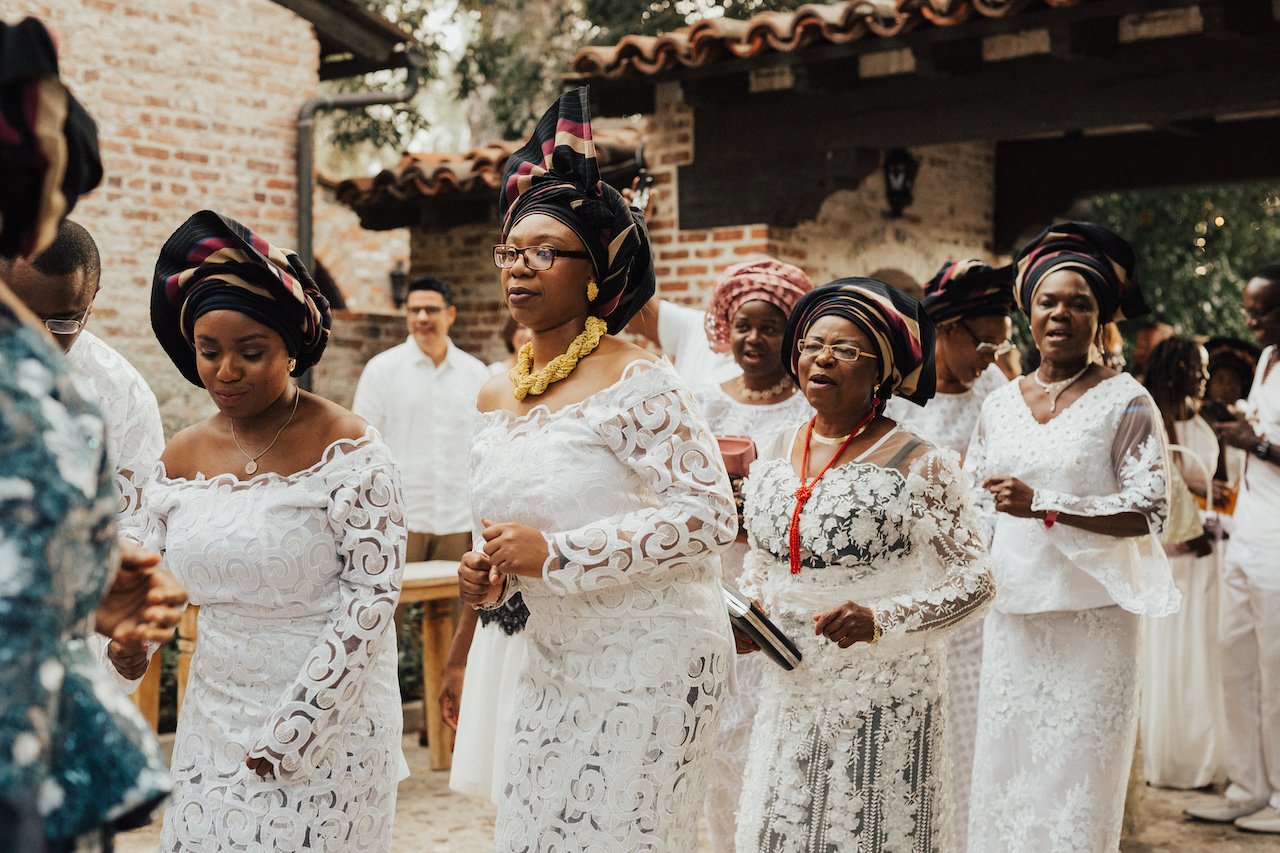



















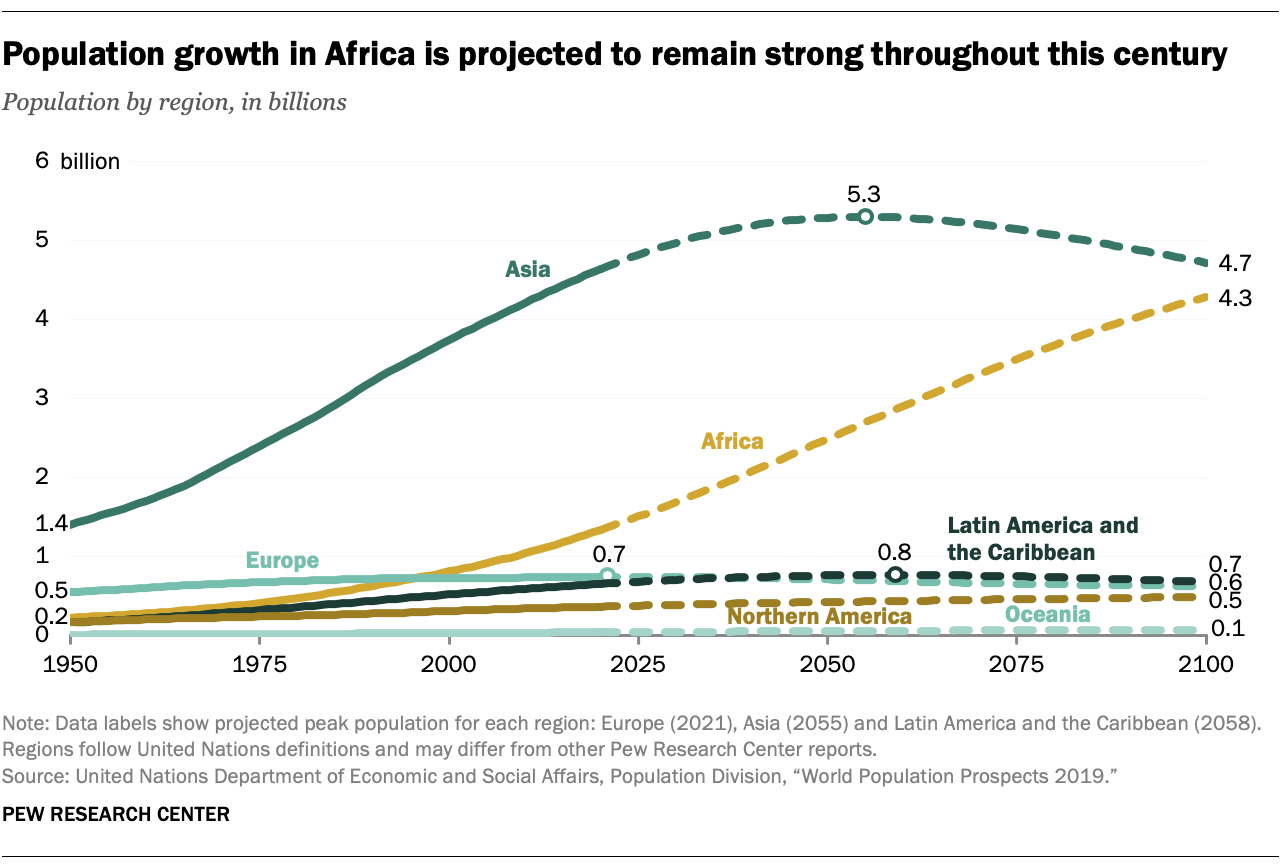

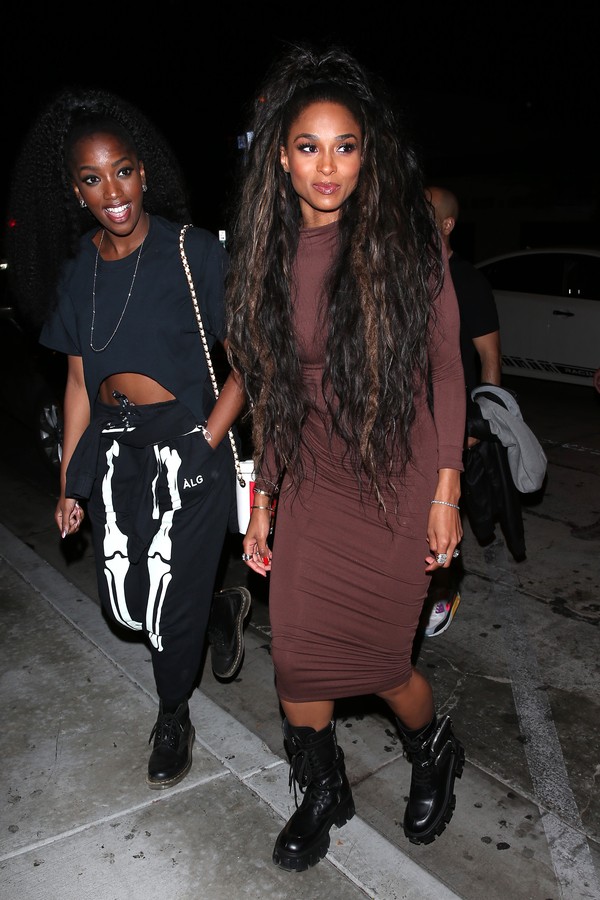

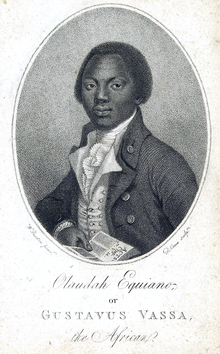





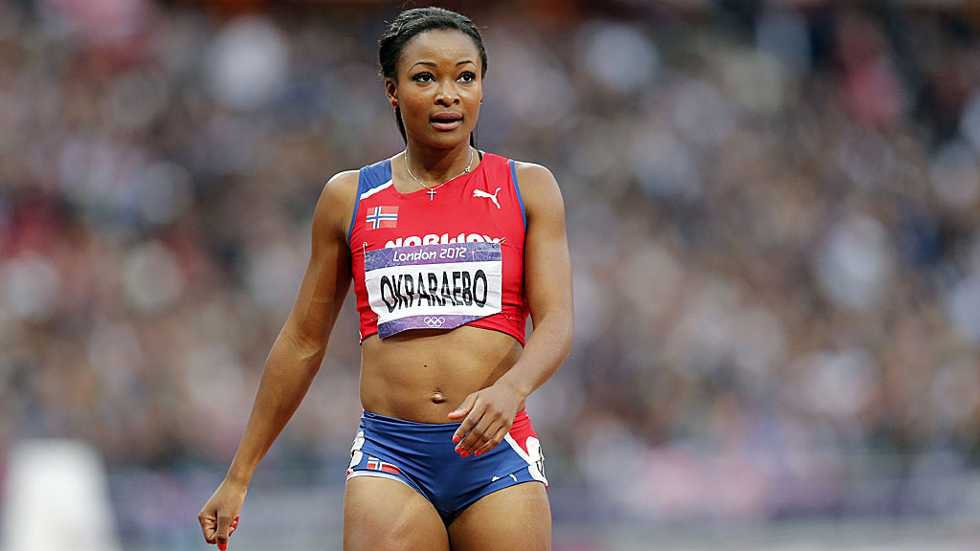




/mmbethune-5895bd9f5f9b5874eee7e727.jpg)
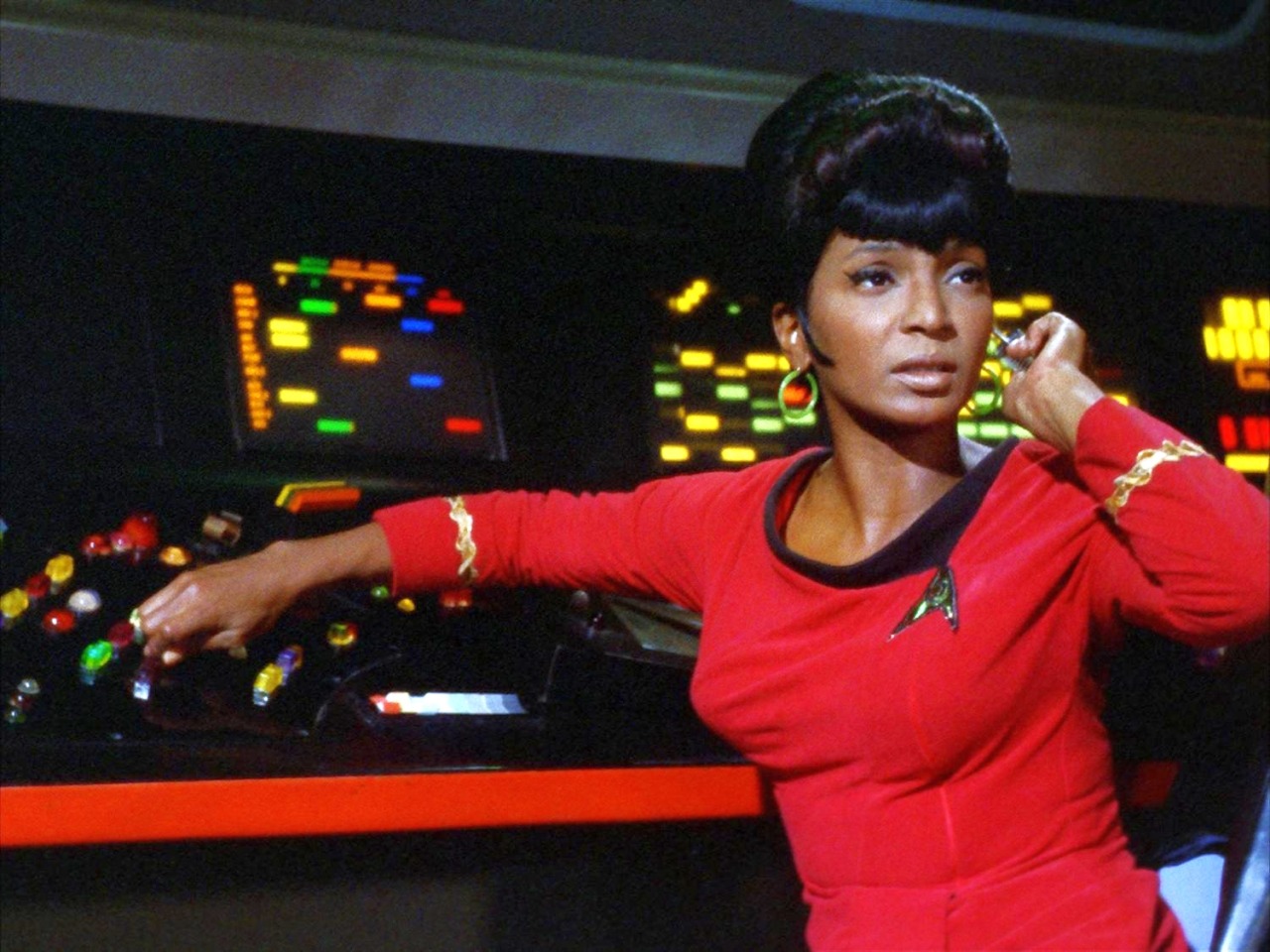

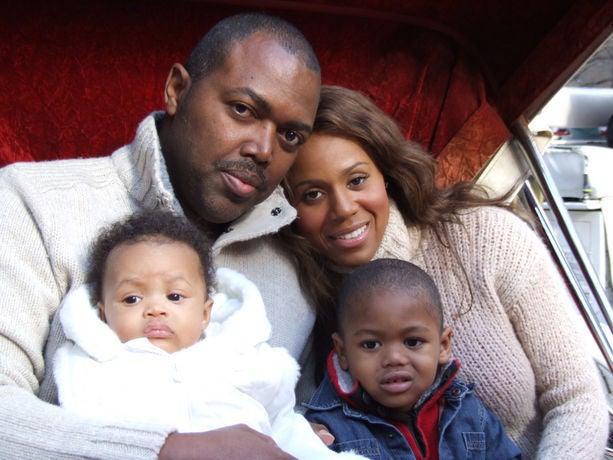









No comments:
Post a Comment